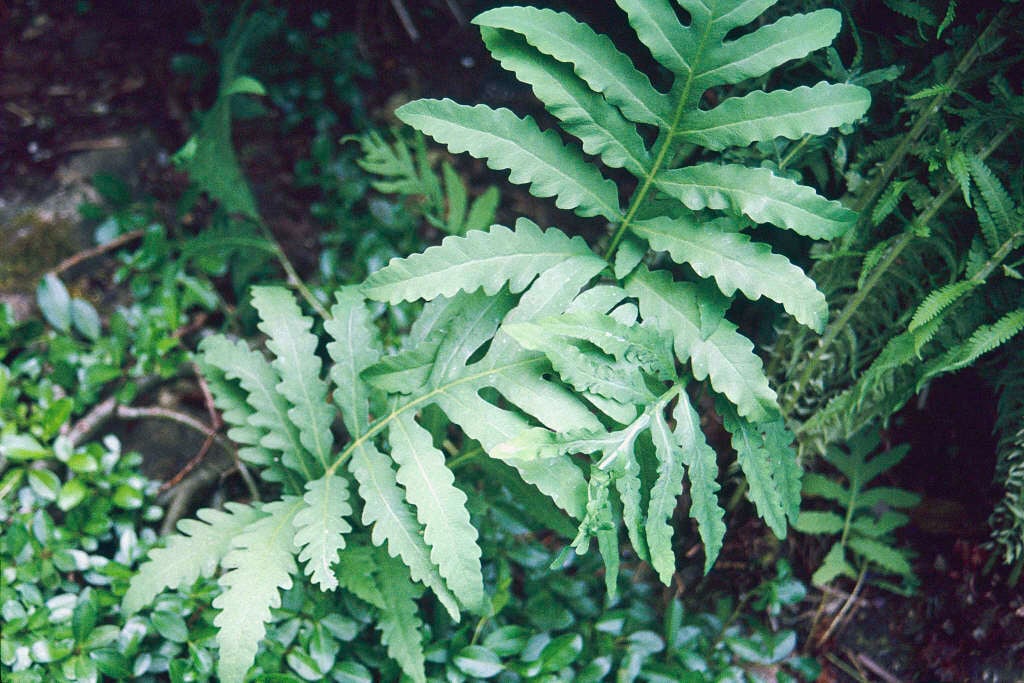Onoclea sensibilis
sensitive fern
A deciduous, rhizomatous fern forming extensive colonies of broad, light green, pinnate fronds to 60cm in length, the pinnae deeply lobed. Shorter, narrow fertile fronds have much reduced, blackish lobes
Size
Ultimate height
0.5–1 metresTime to ultimate height
5–10 yearsUltimate spread
1.5–2.5 metresGrowing conditions
Moisture
Moist but well–drained, Poorly–drainedpH
Acid, NeutralColour & scent
| Stem | Flower | Foliage | Fruit | |
| Spring | Green | |||
|---|---|---|---|---|
| Summer | Green | |||
| Autumn | Green | |||
| Winter |
Position
- Full shade
- Partial shade
Aspect
East–facing or South–facing or North–facing or West–facing
Exposure
Sheltered Hardiness
H6Botanical details
- Family
- Onocleaceae
- Native to GB / Ireland
- No
- Foliage
- Deciduous
- Habit
- Suckering
- Genus
Onoclea are deciduous ferns with creeping rhizomes and pinnately divided sterile fronds; spores borne on more erect, blackish, contracted fertile fronds
- Name status
Correct
- Plant range
- E North America, Asia
How to grow
Cultivation
Easy to grow in most cool, moist, shaded sites. Good for pondside plantings but has the potential to become a nuisance if left unchecked in smaller gardens. See how to grow ferns for further advice
Propagation
Propagate by sowing spores as soon as ripe or by division in spring
Suggested planting locations and garden types
- Cottage and informal garden
- Wildflower meadow
- Low Maintenance
- Flower borders and beds
- Underplanting of roses and shrubs
Pruning
Dead or damaged fronds may be removed as necessary
Pests
Generally pest-free outdoors
Diseases
Generally disease-free outdoors
Get involved
The Royal Horticultural Society is the UK’s leading gardening charity. We aim to enrich everyone’s life through plants, and make the UK a greener and more beautiful place.
